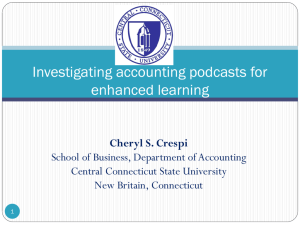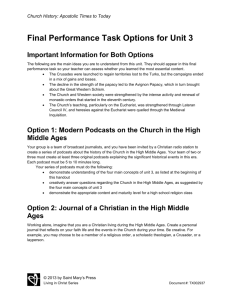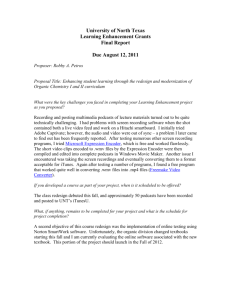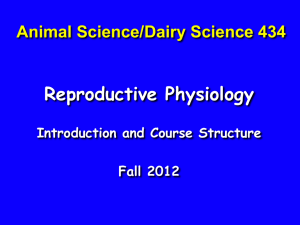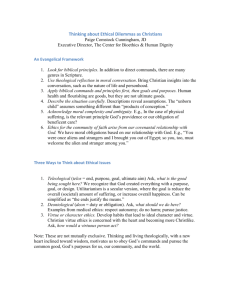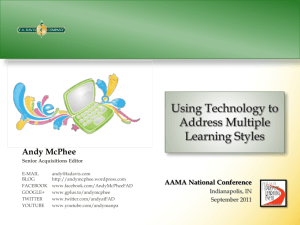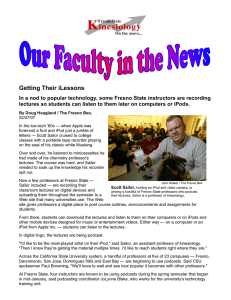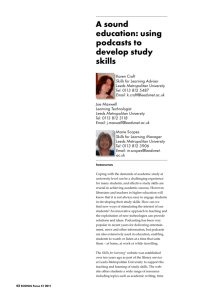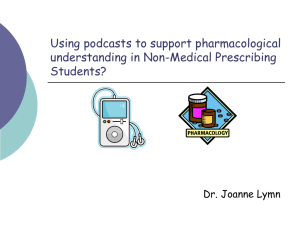Talbot.Lecture Notes corrections. 1..3
advertisement
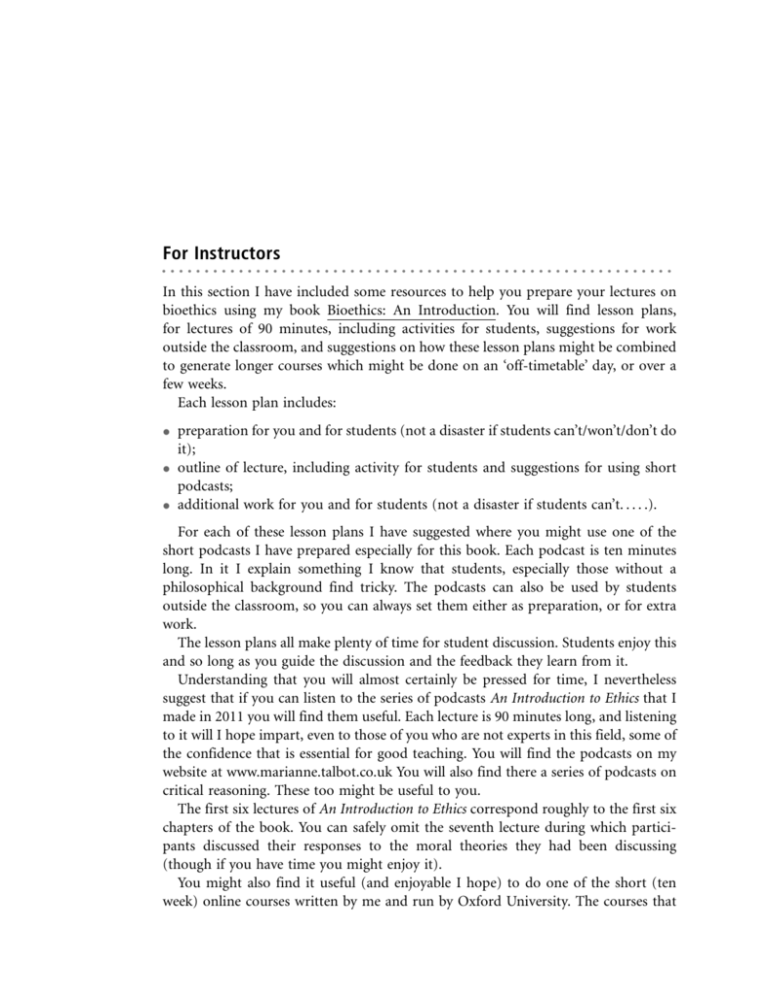
For Instructors ............................................................ In this section I have included some resources to help you prepare your lectures on bioethics using my book Bioethics: An Introduction. You will find lesson plans, for lectures of 90 minutes, including activities for students, suggestions for work outside the classroom, and suggestions on how these lesson plans might be combined to generate longer courses which might be done on an ‘off-timetable’ day, or over a few weeks. Each lesson plan includes: preparation for you and for students (not a disaster if students can’t/won’t/don’t do it); outline of lecture, including activity for students and suggestions for using short podcasts; additional work for you and for students (not a disaster if students can’t. . . . .). For each of these lesson plans I have suggested where you might use one of the short podcasts I have prepared especially for this book. Each podcast is ten minutes long. In it I explain something I know that students, especially those without a philosophical background find tricky. The podcasts can also be used by students outside the classroom, so you can always set them either as preparation, or for extra work. The lesson plans all make plenty of time for student discussion. Students enjoy this and so long as you guide the discussion and the feedback they learn from it. Understanding that you will almost certainly be pressed for time, I nevertheless suggest that if you can listen to the series of podcasts An Introduction to Ethics that I made in 2011 you will find them useful. Each lecture is 90 minutes long, and listening to it will I hope impart, even to those of you who are not experts in this field, some of the confidence that is essential for good teaching. You will find the podcasts on my website at www.marianne.talbot.co.uk You will also find there a series of podcasts on critical reasoning. These too might be useful to you. The first six lectures of An Introduction to Ethics correspond roughly to the first six chapters of the book. You can safely omit the seventh lecture during which participants discussed their responses to the moral theories they had been discussing (though if you have time you might enjoy it). You might also find it useful (and enjoyable I hope) to do one of the short (ten week) online courses written by me and run by Oxford University. The courses that 2 are relevant to this book are: An Introduction to Ethics and An Introduction to Bioethics. You will find out more about them here: http://www.conted.ox.ac.uk/courses/online/short/subject.php? course_subject=Philosophy Now, let’s have a look at the lesson plans. . . . 1. Moral Theory and Biotechnology ............................................................ Preparation for you: read chapters 1–4 and listen to the podcasts Preparation for Students: read chapters 1 and 4 or 1–4. Minutes 1–15 introduce ethics as the study of how we should act, perhaps by means of the ethical dilemma used in chapter 2; introduce biotechnology by means of the definition and examples in box 1.1. introduce bioethics as the study of how we should respond to the new activities (e.g. cloning, genetic modification) made possible by biotechnology Alternatively introduce and play podcast number 1 to the class. Minutes 15–45 (30 minutes) Display on the screen some ‘should’ statements (‘You should keep promises’, ‘you shouldn’t lie’. . .) and ask the class what makes them true if they are true (don’t expect much; if they flounder, this is an indication of the fact we are not used to thinking about ethics in the abstract) Introduce the three moral theories in terms of: o the answers they would give to the question what makes these statements true (if they are true) (virtue ethics: you should keep promises if that is what a virtuous person would do, deontology: . . ..if that is what the moral law requires; utilitarianism:. . ..if it produces the GHGN); o the illustrative scenarios on pages 46/47 and 48. Minutes 45–75 (30 minutes) Divide the class into manageable small groups; Explain cloning to the class, together with the distinction between therapeutic and reproductive cloning (see page 96); Using the activity in the box on page 111, assign one of the three questions to each group, asking each to be prepared to feed back the group’s answers to the class (so they probably need to appoint a spokesperson); Let the groups discuss their question, moving amongst them to trigger additional thoughts and to correct misconceptions. 3 Minutes 75–95 (20 minutes) Get feedback from groups, correcting misconceptions, and making suggestions as you go. Additional Work: suggest students look at the podcasts, or do any of the additional activities for chapters 1–4.
